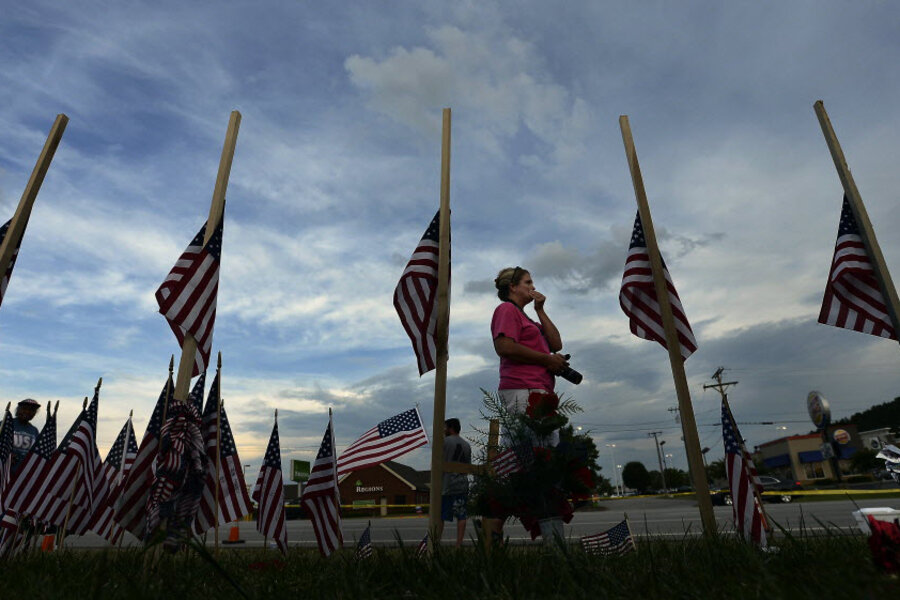How servicemen helped save lives in Chattanooga shooting
Loading...
Authorities on Wednesday offered the public a clearer picture of how last week’s shooting in Chattanooga, Tenn. unfolded, providing for the first time an estimated timeline of the tragedy that killed five US troops.
FBI Special Agent Edward W. Reinhold, who is heading the investigation, said the shooting lasted less than three to five minutes, beginning when the alleged gunman, Muhammad Youssef Abdulazeez, first opened fire at a military recruitment office from his rented silver Mustang convertible.
Then, Chattanooga police chased Mr. Abdulazeez by car before he arrived at a joint Marine-Navy site about 7 miles away, Agent Reinhold confirmed.
Maj. Gen. Paul W. Brier said 20 Marines and two Navy corpsmen were inspecting their equipment after a training mission in California when Abdulazeez rammed his car into the facility’s gates.
Troops sprang into action as the shots began. “They were being soldiers,” Keith Wheatley, the property manager and a fellow Marine who arrived moments after the attack, told The Associated Press. “That's part of their job description. They know that any given time they could take fire, that's what they do. They weren't crying or upset. They were just trying to figure out what to do next.”
Some service members went from room to room to get their colleagues to safety, helping people scale a fence, according to The New York Times. Others ran back into the fight and tried to distract the gunman. A number returned fire.
Abdulazeez shot the first serviceman he encountered inside the building. He then moved through the building shooting at Marines before emerging from the back, where he continued to fire, Reinhold told reporters.
Four of the five service members killed were fatally shot outside the building in the motor pool area, before Abdulazeez also died after a gunfight with Chattanooga and Hamilton county police.
Two weapons found at the scene belonged to US troops, said Reinhold. He added that the military would investigate whether they were authorized to have those weapons.
Gen. Brier did not give further details on how the troops engaged Abdulazeez. “I can tell you that our Marines reacted the way you would expect,” he said.
Asked if anyone was hit by friendly fire, Reinhold said preliminary reports indicate all five troops were killed by bullets from the same gun.
Abdulazeez is being classified as a “homegrown violent extremist,” though it’s too early to determine whether he had been “radicalized,” said Reinhold.
Currently, investigation of the shooting has enlisted as many as 700 to 1,000 FBI agents, reports ABC News.
“This could have been a lot worse,” an unidentified law enforcement official briefed on the investigation said to The New York Times. “It could have been a horrible, horrible massacre – so much worse.”
This report contains material from The Associated Press.






